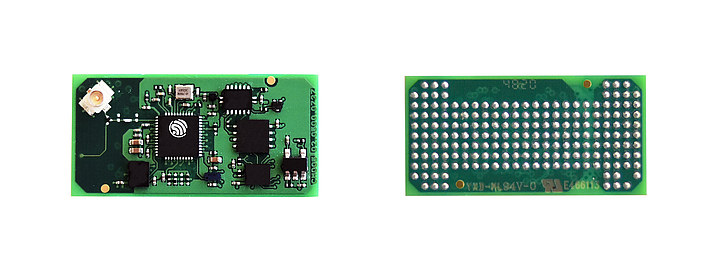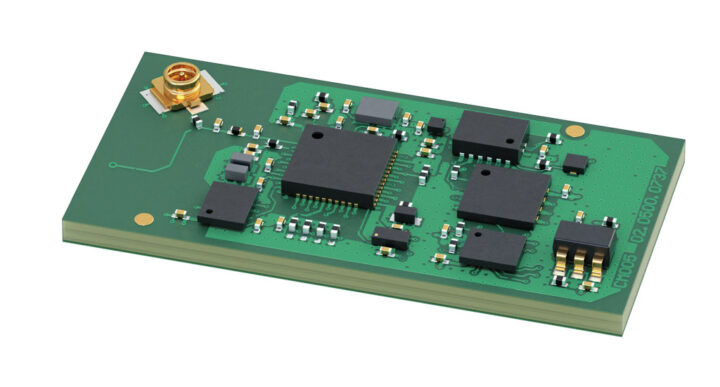German embedded systems company iesy’s ESP32 OSM-0F is an ESP32-based solder-on LGA system-on-module that complies with SGET OSM Size-0 (30x15mm) form factor, offers WiFi and Bluetooth connectivity, and more.
The SGET Open Standard Module (OSM) standard defines four module sizes, namely Size-0 (30x15mm), Size-S (30x30mm), Size-M (45x30mm), and Size-L (45x45mm), and all the modules we’ve covered so far were powered by a Linux-capable processor. But it’s more challenging, albeit not impossible, to design a Linux-capable OSM Size-0 module, and that form factor is better suited to microcontroller-class chips like ESP32. (Technically, ESP32 can run Linux, but it’s more for show that any practical applications)
- Microcontroller – Espressif ESP32 dual-core Xtensa LX6 MCU @ 240 MHz with 512KB RAM, Wi-Fi 802.11 b/g/n and Bluetooth/BLE
- Storage – 32 Mbit SPI flash
- Antenna – u.FL connector
- 188 LGA contact points with
- Storage – SDIO
- Networking – 1x 10/100M Ethernet (RMII), MAC compatible with IEEE 802.3
- Other I/Os – SPI, I2C, ADC, GPIO, PWM
- A fair amount of pins that are not connected at all
- Misc – RTC
- Supply Voltage – 3.3 V DC-Input (± 5%)
- Power Consumption – <1 W (typ.)
- Dimensions – 30 x 15 mm (OSM Size-0 Land Grid Array (LGA), solder-on modules with 188 contact points
- Temperature Range – Operating: -40°C up to +80°C; storage: -40°C up to +85°C
 iesy lists FreeRTOS-based Espressif IDE (that should be the ESP-IDF) and PlatformIO for software development.
iesy lists FreeRTOS-based Espressif IDE (that should be the ESP-IDF) and PlatformIO for software development.
While it’s nice to have a standardized form factor for potential design upgrades down the road or multiple product offerings, many existing ESP32 modules are already smaller, and there should be quite a lot of pins that are unused in the OSM Size-0 module when using the 48/49-pin ESP32 WiSoC. But that’s just the first Size Zero module that I could find, and more may be released soon.
More details about the ESP32 OSM-0F module may be found on the product page.

Jean-Luc started CNX Software in 2010 as a part-time endeavor, before quitting his job as a software engineering manager, and starting to write daily news, and reviews full time later in 2011.
Support CNX Software! Donate via cryptocurrencies, become a Patron on Patreon, or purchase goods on Amazon or Aliexpress





